BY ELLERY SHEA ’25
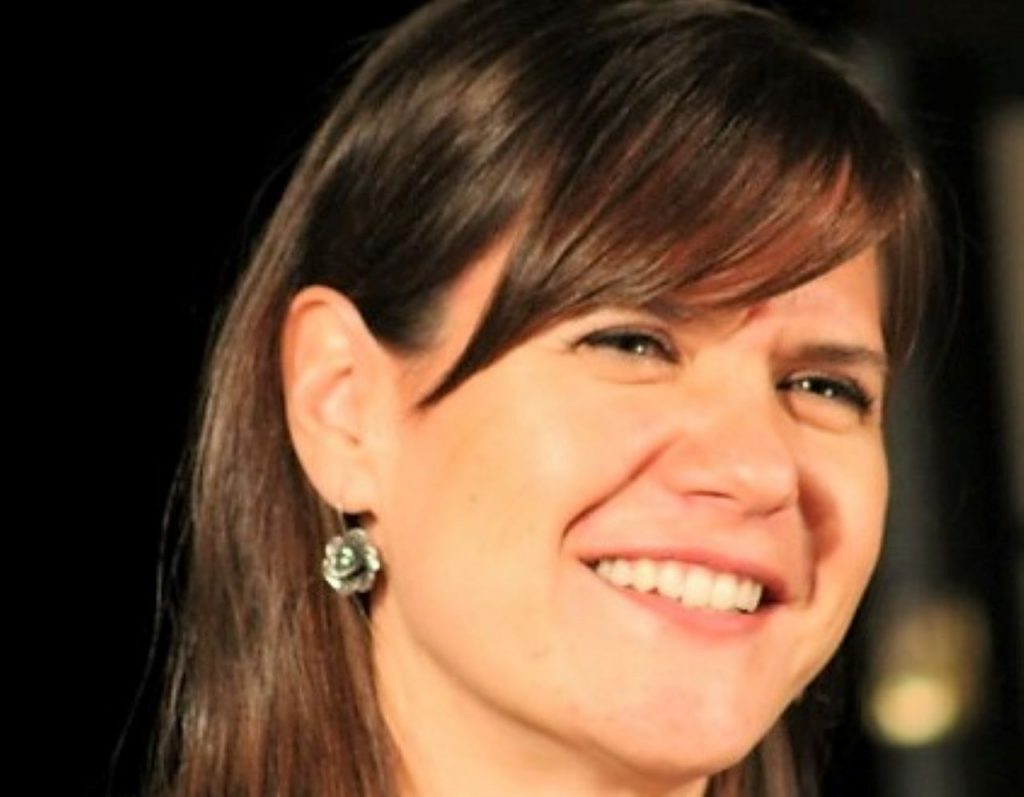
As the end of the Fall 2023 semester closed in on us, and the sunset began outside my window, I sat down with this year’s Visiting Assistant Professor in Directing Margarita Blush to discuss her career as a theater artist, as well as the Mainstage theater production she is directing this Spring: Where Are You Going, Little Horse?
Although I have come to know Margarita’s life as an artist very well through her teaching my Theater and Culture II class, I asked her to respond as if I was not familiar with her artwork.
ZOOM: Recording in Progress.
ELLERY [joking]: Everything you say can and will be held / against
MARGARITA: Against you—yes, exactly!
After we concluded our banter, we settled into an informative conversation, which I have included below. Some edits have been made for brevity:
ELLERY: Margarita, it is so wonderful to be able to sit down with you and chat about your theatrical career and all that has led you to working here at Skidmore College.
One thing that I value a lot about being in an education setting is the ability to learn from your professors not only through what they teach in the classroom, but also what they practice as artists, so I just wanted to open this interview by saying thank you for sharing your unique approach to creation will all of us here. We all appreciate it a lot!
MARGARITA: You’re welcome, I’ve loved it here.
ELLERY: To start things off, do you want to tell me a little bit about yourself as a person: Where are you from? What do you think we should know about you?
MARGARITA: Sure! I am Margarita. I identify strongly with my name, especially in English, which is so interesting because I prefer my name in English than in Bulgarian, which leads me to the second thing, which is that I am originally from Bulgaria and I am a Bulgarian American. I moved to the U S. in 1995. So I’ve been here for 28 years now. I also identify very strongly as a woman, artist, mother, and wife. I have a wonderful daughter named Sophia. She’s 24 and I have a husband. We have two cats, which we adore.
However, being an artist is probably the strongest [part] of my identity. And I am an artist who creates theater. I create original theater and my artistic identity is that I am a performer, director, and educator in the realm of physical and visual theater, primarily devised original theater.
ELLERY: Wonderful! So what first brought you to the theater?
MARGARITA: It was actually a complete accident. Well, I was always a very artistic child. I sang, I danced, and I painted (not that I’m great at it). I was very crafty, and I was always doing some kind of performance or another. However, my parents are both scientists, so being an artist was not even on my radar as a possibility.
But my parents had a friend who was teaching at the National Academy for Theater and Film Arts, and she heard me sing one day and she said to me, “Do you realize that you have artistic sensibilities and artistic career potential? And have you ever considered applying to the Theater Academy?” And I was like, “absolutely not! What?”
It was really hard to get in. It was not something that I had ever considered I was capable of. And my parents’ friend said, “well, if you think about it and want to do it, I’ll help you get prepared for the auditions.” And so I did, because I guess the temptation of being an artist suddenly became very strong. So I auditioned, and the rest is history.
ELLERY: What was that audition process like? What did they have you do?
MARGARITA: Oh my gosh, it was super intense. It was four rounds. The first round of auditions you kind of showed up and you did your traditional monologues. You also had to prepare a song. Anyway, so you did your thing and then they started giving you like impromptu directions. You also had to repeat a musical phrase so they could see how musical you were. And then there was one that they gave you just random acting directions, you know: “do this, do that.”
So that was four rounds. And after each round, people were cut and cut and cut. And then after the last round, a list was made of who was accepted, but it was nerve-wracking. It was so hard.
ELLERY: And I bet that as someone who had only recently discovered they were a theatrical artist, it must have been really overwhelming to suddenly be considering things you may have not been paying attention to before, like movement.
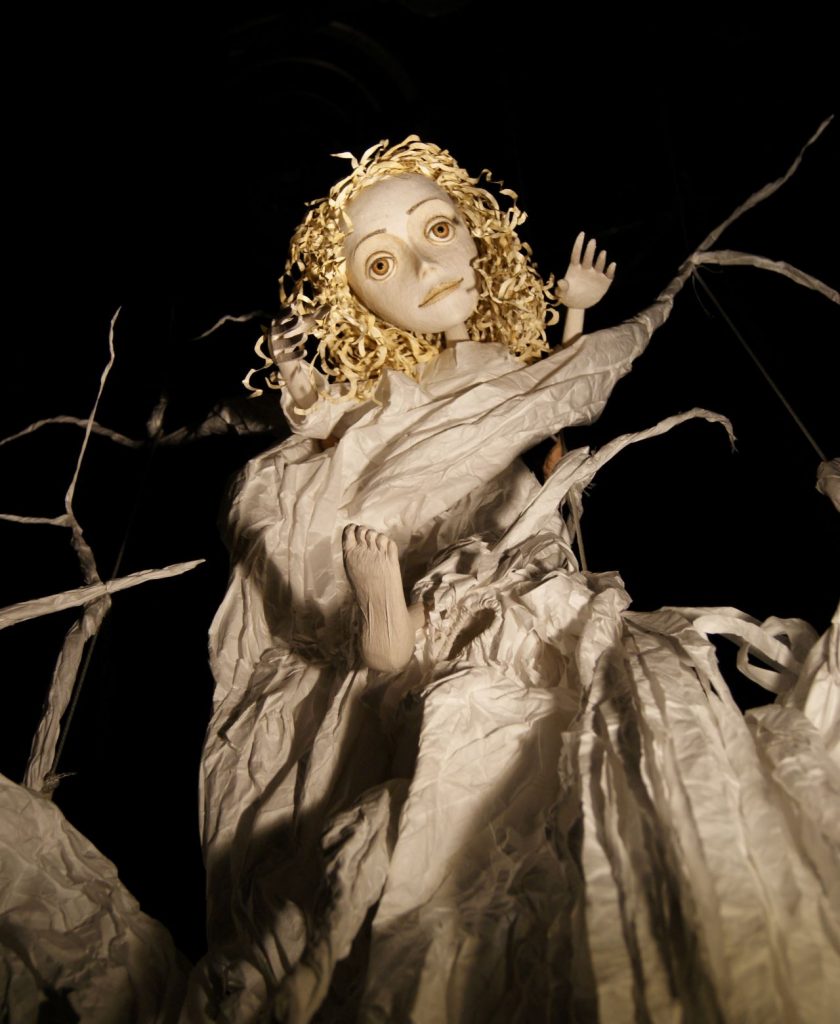
MARGARITA: Yes, yes. Fun fact, something that I pretty much never dwelled on, but I’ll talk about it now: I ended up being first on the list. I had auditioned in this white dress and they kept remembering me–the girl in the white dress!
ELLERY [miming bowing]: Oh my goodness, I didn’t realize I was in the presence of a celebrity!
MARGARITA: Oh, hardly, hardly [chuckles] So yeah, this is this is what led me to theater, and when I auditioned the person who helped me get ready also said, “Oh don’t go for the drama theater, go for the puppet theater because the puppet theater department has so much more imagination. You will learn so much more there.” And so, I didn’t even audition for the drama department. I went straight to puppetry and I loved it. I absolutely loved it because that was exactly true.
ELLERY: What was it like in the Puppetry program?
MARGARITA: It was a conservatory education. We did study acting and movement, acrobatics, singing, voice, all of the things that the actors were learning. And we studied puppet forms on top of that.
Devised theater is what we did back in the day, 30 years ago, when nobody was talking about devised theater. We were inventing things all the time. So, yeah, it was something that I really fell in love with. And I just stupidly continued pursuing it.
ELLERY: Not stupid at all! I mean, you’ve brought a lot of light to my life, so, that’s at least one person who you’ve changed through your artistry.
So, from my understanding, you started right out of the gate with puppetry. When you finished up at the academy, where did you get your first public professional experience? Was it in puppetry?
MARGARITA: Actually, that’s interesting– I’ve never looked at it that way! We were selected to be a class of singing people because our professor was very, very music-driven. During our education, we had a very passionate teacher. We started singing acapella and singing Bulgarian folk songs with many harmonies and remixing them–and then we formed an acapella singing group. And actually, the first gig out of the Academy was with the acapella group!
ELLERY: So, was it acapella puppetry?
MARGARITA [giggling]: No, no puppets–just singing! And then we actually created a visual theater show with the songs that there was no spoken word or words to be spoken. It was only singing and visuals. So yeah, it was in the realm of visual physical theater, which also falls into the realm of puppetry. But not like puppets per se, just images. But we created a show with that, and we also sang, so we had concerts. We traveled in Europe quite a bit, and we performed in Bulgaria, and yeah, we had that one visual theater show that we also performed at a few venues, including a festival in France!
ELLERY: Ooh! Do you want to tell me a little bit more about what you mean by visual physical theater?
MARGARITA: Behind the ethos of calling visual theater is that it begins in the body and the space. It does not begin with language. That doesn’t mean that we do not use language, but language arrives later. So, you could have a show with no words. And everything is expressed through the body. So this is physical and movement-based theater. And there are many schools. I mean, there are not that many practitioners that have practiced this kind of theater.
I come from the lineage of Jacques Lecoq and the Lecoq School in Paris. I didn’t study there, but I studied with the people who have studied with Jack LeCocq. So that’s the lineage I follow in. In physical theater and visual theater, I also struggle a little bit with that identity because when I say that I’m a puppet theater artist, especially here in the United States, people have a very wonky understanding of what puppet theater is.
ELLERY: I bet people assume that it’s either children’s theater or The Lion King.
MARGARITA: Exactly! They either imagine sock puppets, The Lion King, or the Muppets. Definitely all great things, but also very constrictive. Puppet theater has so much in between.
ELLERY: It should be understood as a continuum, not a binary, right?
MARGARITA: Yes, it’s a huge continuum. Masked theaters. Yes, exactly. How postmodern of us! (context: we had just been discussing postmodernism in our Theater and Culture class the day prior).
But yeah, then visual theater also uses images. At the same time, they don’t necessarily have to be puppets, like fully-fledged puppets. It can be object theater, it can e almost any material or object you take on the stage and make the focal point of the show, that would be considered visual theater.
And because I practice both physical theater and puppet theater in my work, I think that for myself, saying that I’m a devised visual theater artist is something that encompasses the worlds of both physical and puppet theater. For example, not all of my shows use puppets.
ELLERY: Yeah. So when, when you say visual physical theater I guess I’m really thinking of symbolist theater in the way that there’s something about the visible representation and thinking about the images that go with it being married into one cohesive experience.
MARGARITA: It is very rooted in that, and at the same time it’s also really rooted and follows the lineage of all of the anti-realist movements. There is a tremendous expressionist aspect to it. Brecht had a huge influence, and a lot of contemporary physical theater is very Brechtian and puppet theater is very Brechtian. Grotowski’s work, Meyerhold’s work, all of that stuff is the lineage of physical theater.
You’re pointing it out very well, that it’s rooted in symbolism because it was the first anti-realism movement. So that’s the lineage, we’ve always been anti-realism. How can we express things that are not expressed in a realistic way? Which does not mean unbelievable. Things are believable, but they’re not realistic on stage.
ELLERY: And I love that! In my mind, that’s the heart of theatre right there. We could just make everything literal, but as an audience member, I love to interpret and analyze what I’m seeing onstage in front of me.
So what would you consider to be your main interests in theatre these days? And how did you get there? How did you arrive at those points or genres that you find so compelling?
MARGARITA: I call my theater poetic theater, because I’m interested in creating theater that is not necessarily cohesive through narrative, but it is an accumulation of images and gestures that create one expression. That doesn’t mean that there is not a story. There is some kind of a story at the same time. It’s kind of loosely woven together, so the audience needs to make up a lot of it in their own minds.
I’ve started being more and more interested in creating original theater not working with scripts, even though I do still sometimes work with scripts. For example, the Mainstage this spring, Where Are You Going Little Horse, will be something that is a [scripted] play. And I’ve wanted to do this play for more than 10 years now because I just love it so much. But it’s very rare for me to find any more plays that really lend themselves to my interpretation. Mostly because it seems like a lot of it is just so realist driven and that doesn’t work for me or I read and then I get to a point when I’m like: “Oh, but I don’t want this part!” So then I just say “I’ll just do my own thing”
ELLERY: Exactly my sentiment! I’ve gone through a lot of scripts recently, and a lot of them are just so good, but on my first read, there’s always some piece that makes me wonder what would happen if it went in a different direction.
MARGARITA: I’m very interested in creating original stories of stories that have meaning and resonance in the world around us. It’s so funny–every time I read a story or hear the news, I’m like: “I want to turn this into theater!”
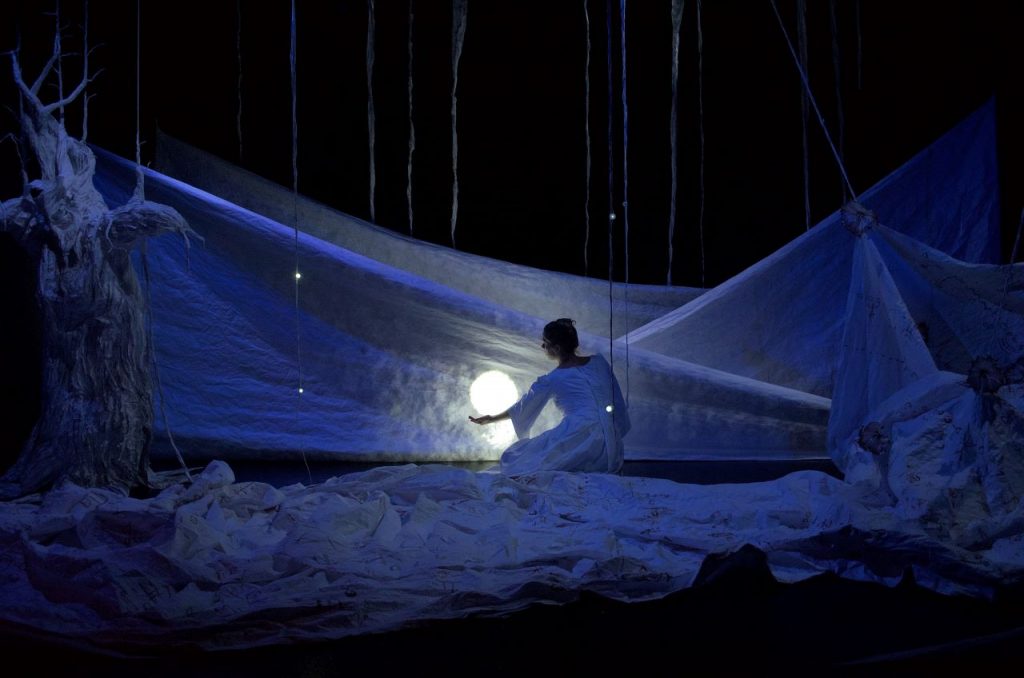
ELLERY: On the topic of the Mainstage, do you want to share with us why you chose to direct Where Are You Going Little Horse right now? Why do you think that it might be especially relevant?
MARGARITA: Oh my gosh. I’ve loved this play since I read it many, many, many years ago. This play was my final production for my Directing MFA. I was so pressured back then on time and resources that me and my designer ended up doing something that we were really proud of at the time. But at the same time looking back, we always went: “Oh, I wish we could do it again. I wish we could do it again and do it justice”
We wanted to develop a secondary concept for the play. We had the luxury of time, there was no pressure to produce it, we just did it because we wanted to. So we developed the concept we wanted to, and my designer drew images, sketches, and I’ve been sitting on them for more than 10 years.
But also, as a play itself, first of all, it’s very poetic. This is exactly what draws me to theater. It’s these very metaphoric, poetic characters. The language is poetic. And it’s things that talk about, of course, the human condition. And yet they’re veiled as, “Oh, it’s just a little horse. It’s just a little boy.” But they speak to such amazing, deeply, deeply meaningful subjects and themes in society.
And what’s interesting is that the play was written in the 1970s. At that time, Bulgaria was a communist country, and they were addressing certain issues throughout their country. But if you look at it through the prism of the society we live in today, it is so relevant. It changes a little bit the meaning of the carnival, you know? Back then it was the totalitarian regime; in American Society, it would be that rat race of capitalism that we fall prey to.
So, this is what is so amazing about this piece; I think it will be relevant to humanity in some way, always, because we always have these two options: do we fall into the traps of conformity and comfort by paying for it with our freedom and identity or we do follow the dream of being big and brave and strong, to be somebody, to be an individual, to stand for what’s right in the world, but then face the challenges that this presents?
Well, you need to run in the rain and you need to experience hunger—maybe. Of course, these are the metaphors that the playwright is using in the play—but you know, life might be a little harder, but which choice are you making? As somebody who has made the choice of chasing the poetic, maybe Quixotic dream of being big and brave and standing up for what’s right and chasing ideals, it’s a play that deeply resonates with me.
ELLERY: And I believe that active resistance is such a relevant theme to bring up in the face of today’s political climate. I think that a lot of people underestimate the sort of power that these narratives can have when they come back. Their resurrection reminds us that we are in a constant cycle of fighting similar battles over and over again throughout history and that it is possible to learn from the thoughts of historic artists and the climates they created their art within.
So, this has been a very important story within Bulgarian culture, from my understanding, right?
MARGARITA: Absolutely. It’s an original play written by this playwright, and it’s one of the gems of Bulgarian puppet theater dramaturgy. So yes, it’s been produced all over the world and throughout Europe many, many times, but never in the U.S.
ELLERY: So, as we’ve discussed in our Theater and Culture class there’s sometimes an absence of these international works being brought into the American sphere often because of just how differently theater institutions can work in different countries. What do you hope that your future collaborators will be able to glean from this experience?
MARGARITA: You mean from the experience here in Skidmore?
ELLERY: Yeah, well, like, being able to perform you know, a play from a different culture, a play that they probably have never heard of prior to this. And specifically, being able to work on it with you and with the pedagogy that you practice.
MARGARITA: Well, I truly hope to have collaborators who are also passionate about this kind of theater that is a little bit less predictable. And one of the things that I’ve heard so many people say that had not even occurred to me until now, is how short the script is. People say, “how could this possibly be a mainstage production when the script is so short?”
Well, to this I say something that my professor, the one who accepted me into drama school many years ago, used to say: “Theater comes from the word theatron, which means the seeing place. This is the place where we see things. Of course, we hear things, but primarily we see things.”
So, to me, words are the tip of the iceberg. So, this 19-page script will turn into a 75-minute show because there will be so much imagery and so much action and expression through the visuals on stage. There will be shadow sequences, puppet sequences, movement, and scenery. And I also understand that this kind of process is more uncertain. It almost feels like jumping off a cliff and seeing how you’re going to land. It’s not that predictable, and that’s why it’s so thrilling when you arrive on the other side and land, and you go “Oh my gosh!”
So this is what I hope that people will gain if they audition with my show in mind. Of course, they need to buy into it. You know, if you don’t buy into it, then, then it doesn’t work.
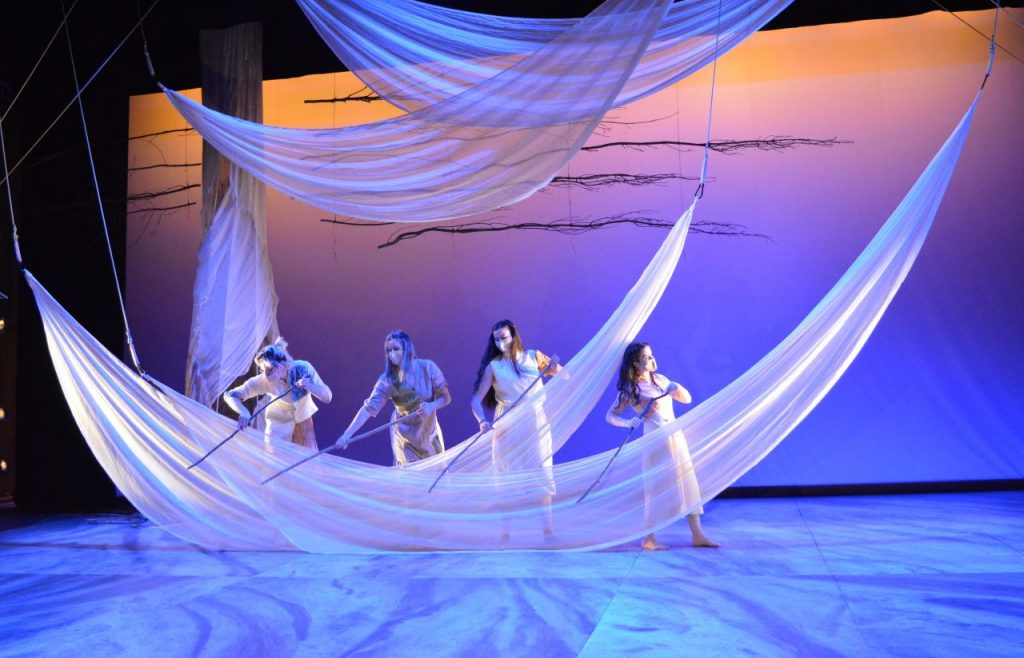
ELLERY: Yeah. I am so, so, so glad that you are taking that sort of approach with it because I feel like it’s the sort of thing that is rarely seen in the Skidmore Theatre department. I mean, we just had [RE]MAKING, which was a forty-six-page script that was an hour and a half show, and I think that as somebody who has recently participated in that kind of process, that there’s something so compelling about showing up to rehearsal and not being entirely sure of what you’re going to create. I mean, it’s scary to look at a script and there not being any certainty in stage directions but I think that abstraction brings such a new layer of artistic flexibility and uniqueness to every single production.
I mean, Little Horse is going to be a uniquely semi-devised opportunity for all of your collaborators. And I think that it’s something that you know, students definitely shouldn’t sell short: it’s basically almost a devised theater process, but in the comfort of a narrative that is set. But it’s just a question of, okay, well, how are we going to tell this story?
MARGARITA: Yes, yes, yes, yes.
ELLERY: It’s not a truly traditional theater, but it’s also so much less of the directors. There’s a lot less flexibility for the director, whereas here, there’s so much for the director and everybody who’s involved with the collective process to do things.
MARGARITA: And I am one of those. I do come from the Eastern European tradition, which I have been told is linked to the German tradition, in which the director is very interpretive and very often directors are auteurs and their signature is like–you know, you see the work of Julie Taymor and you know that that’s Julie Taymor, no matter what, you know you can recognize the aesthetic or the approach or Robert Wilson or one of those auteurs. So, I do come from that tradition where the directorial vision is what drives the process. It is not so much rooted in the text.
ELLERY: Yeah, I am absolutely on board with that approach to directing: thinking of the director more as an auteur or dramaturg than just somebody who’s putting something on to put something on.
So, you came to America in 1995.
MARGARITA: Yeah.
ELLERY: So, what brought you here? And then also, was there any, like, culture shock when you first came to America?
MARGARITA: So, actually, my husband is American. So, it was because of my husband that I came to the U.S. We had met almost two years prior at another festival here in the U.S., which was held at the university where he was going to school. And we (from the National Academy) we were invited to perform. So, we arrived at this like university-based festival and that’s where I met him for the first time. Then, I went back to Europe and he came to Europe. We met again. It’s a very long and very romantic story, but eventually, we got married and we decided to come to the U. S. because he was starting to miss the U.S.
Sometimes I partially regret coming back, but, oh well, it is what we did. So we came to the U.S., that’s how I arrived here. And, yes, the culture shock was tremendous. When I first came, I was in the Midwest, we lived in Ohio and Indiana. Then we moved back to Bulgaria for a few years. Then we came and lived in Boulder, Colorado for a few years. And then from Boulder, Colorado, we came to Connecticut. So, I’ve lived in all of these different places in the U. S., and every time it has been a culture shock. You know, the Midwest is so different than the East Coast, and it’s so different here from the Southwest.
ELLERY: I’m sure also in terms of theater scene, that there’s a lot of different scales and forms of production.
MARGARITA: Yes. At the same time, you know, I’m a very resilient person. I kind of I’m like a heavy-duty seed. I grow wherever you plant me. So I just, every community we went to, I was like knocking on doors, meeting people, emailing people, calling people, and I would meet people and I would start building a community in every place we went.
I built a community. I started practicing my art for a while when we first moved to the Midwest. The only thing I could find was modern dance, modern and postmodern dance. So that’s what I started doing. I was a dancer for a while for a few years. And that’s where I started choreographing/directing because all of my works blended movement and puppet theater techniques like shadows or objects.
So yeah, in every community I went to, I dug up the artists and I became a part of the theater scene or theater/puppetry/dance scene of the town. And that’s the life of an artist, you know?
ELLERY: Yes! It’s opportunity-based, it’s working with what you have, and it’s finding an opportunity and group of people that can help you grow in some way. And all that experience makes you into who you are as an artist.
MARGARITA: Oh, absolutely. Absolutely. It is exhausting, but nobody can say it’s boring. It’s been very, very, fun, yes, absolutely. All of these experiences have shaped me to be who I am.
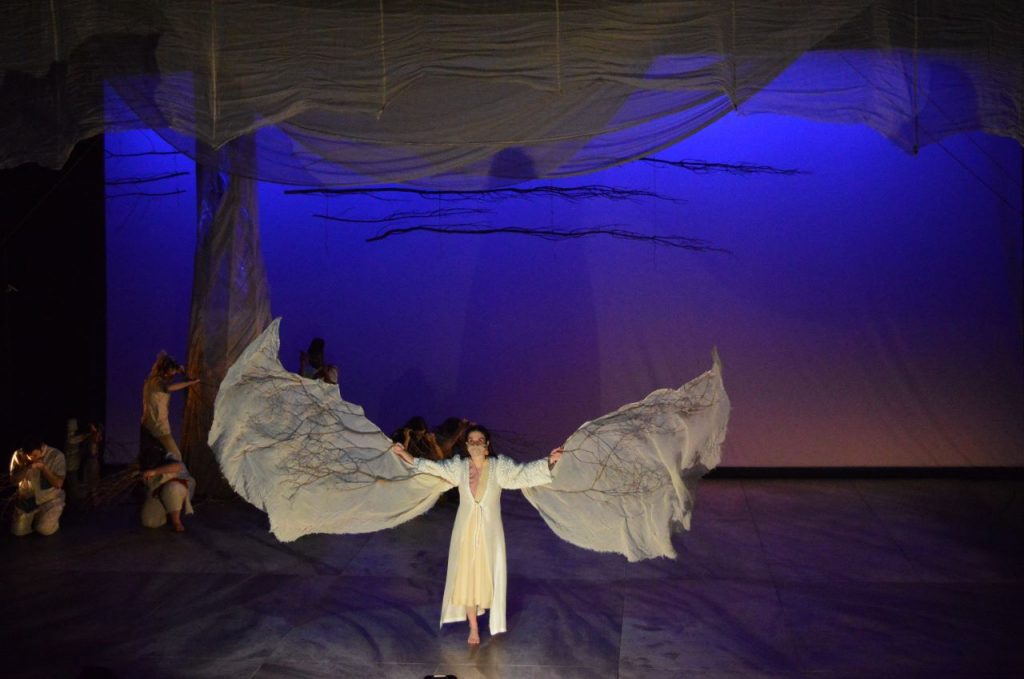
ELLERY: So what do you think your favorite part about teaching at Skidmore thus far has been?
MARGARITA: It has been really fun to work with students with so much to offer, so much intellectual knowledge and you know, depth. People that I can engage in very meaningful conversations with, like in Theater and Culture. As you know, when people participate in class, when people speak up on the topics, class has been really, really fun.
It’s been even more fun working with Intro to Directing. They have taken what I have offered very willingly and happily. It can be a little disorienting. My approach is not the traditional approach and they have really rose up to the occasion and they have written and created some really cool stuff.
The Intro to Theater Class you know, the students are, they’re so new, it’s their first semester in college, so it’s been really fun to kind of guide them and be making connections with them. Some of them are just so eager and open-eyed. So it’s been really fun to cultivate their theatrical excitement.
And the department overall has been so welcoming. So, so wonderful. The facility is amazing. I think I was telling at least one of my classes how amazing the facility is and how amazing of a privilege is to have access to such facilities as students.
So yes, people have been so great to me. I mean, even the fact that people embrace the idea of doing a puppet show by a Bulgarian playwright in the Spring, speaks to how wonderful and curious this department is as a whole.
ELLERY: What do you think the most important thing you’ve passed on to your students is?
MARGARITA: Well, I always hope that creativity, imagination, and the ability to look beyond what’s right in front of you is what I want to pass on to my students–that desire to say like, “let’s dig it up! Let’s talk about it. Let’s look at it from different perspectives. Let’s not settle for what’s known. Let’s like shake it up a little bit.”
So, this is what I hope to give students and what students have given me: dedication, involvement, and willingness to go on that ride with me. You know, they’ve taught me so many things too. I love when we have exchanges in class and I learn new things from students.
ELLERY: And what do you think is the most important thing that they’ve passed on to you?
MARGARITA: Yeah, the overall acceptance of me, my sensibilities, my ethos on teaching, and directing has made me feel very welcome. And those are the gifts that the students have given me. And it’s been so fun to work with you this semester, Ellery.
ELLERY: I am so happy to hear that. You’ve been a pleasure as well!
As we closed out our interview, Margarita reminded me of her lifelong commitment to all of her students, past and present—that if we ever need her guidance, all we need to do is reach out and ask. After presenting my utmost gratitude for her time and words, we concluded the interview.
I shut my laptop, and as I closed the shade to my window (the sun now having set), I walked to rehearsal for a theatrical final project I was working on. During the rehearsal, I thought of the space as a theatron, a seeing place, just as Margarita had reminded me. And for that day, it changed my perspective in a way that played so well with what we were up to. I look forward to seeing what Margarita has in store for us with this semester’s Mainstage.
Click here to go to Margarita Blush’s website
Photos by Margarita Blush
***
Ellery Shea ’25 is a staff writer for the Skidmore Theater Living Newsletter
